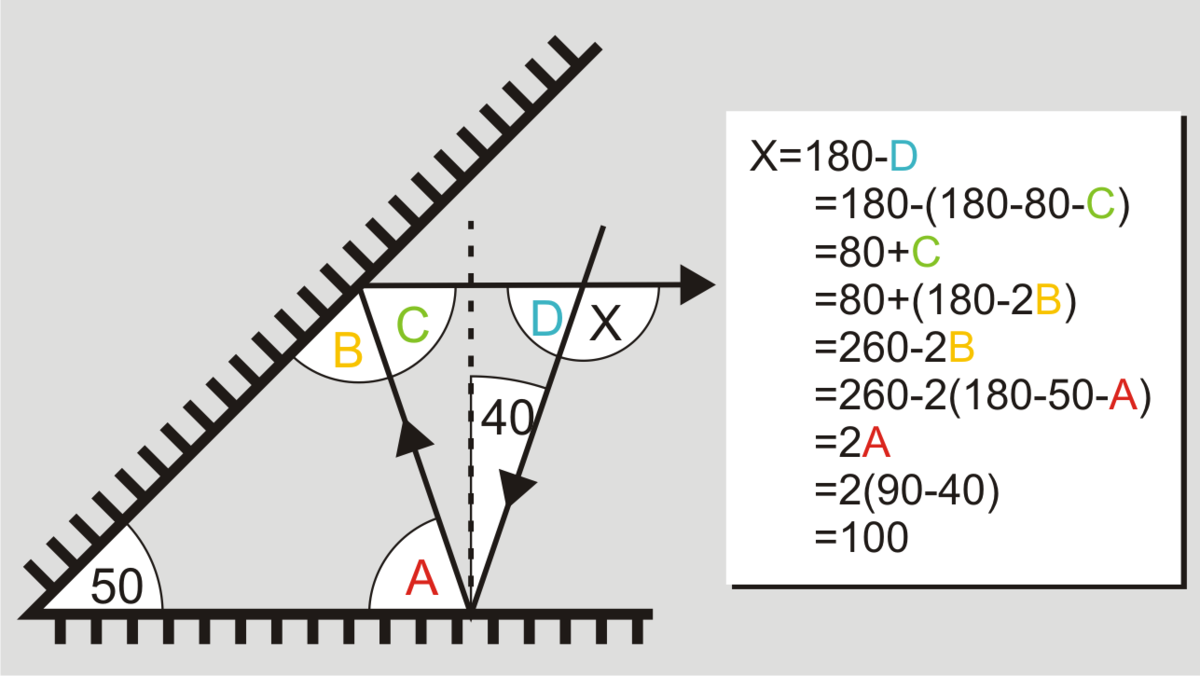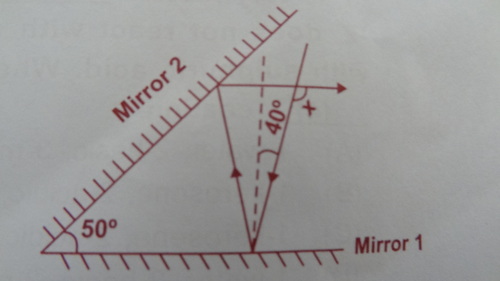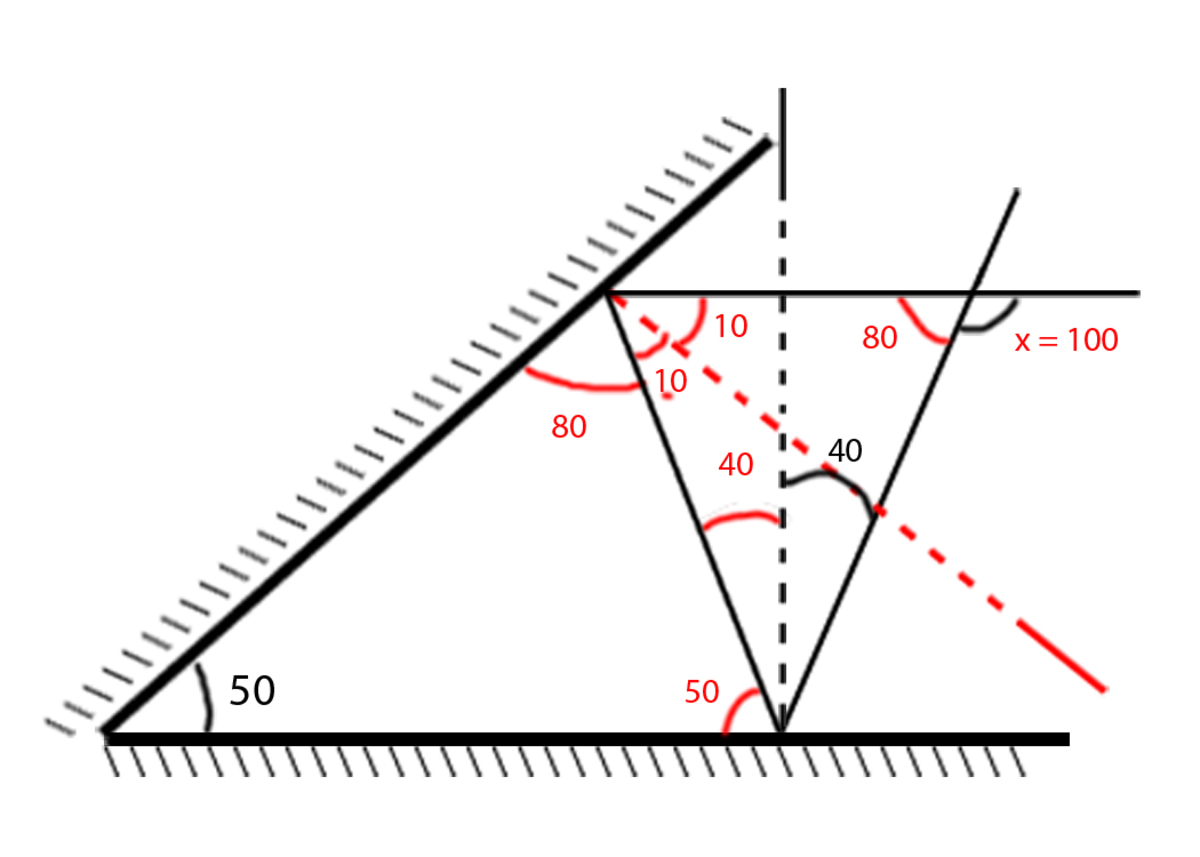This section requires Javascript.
You are seeing this because something didn't load right. We suggest you, (a) try
refreshing the page, (b) enabling javascript if it is disabled on your browser and,
finally, (c)
loading the
non-javascript version of this page
. We're sorry about the hassle.
5 solutions

If you really have used angle of incidence=angle of reflection, then 180-2 A =2 40 =80 C=90-40=50 X=80+50=130.
The provided "solution" is NOT correct.
Log in to reply
You are assuming that the normal to mirror 1 is perpendicular to the exiting light ray, which is not true.
How did you find the "2B"? Use Visualization? Sometimes the picture is not correct Sir.
Log in to reply
To get from C -> 2B use the fact that angle of incidence = angle of reflection (hence C = 180 - 2B). To solve for 2B use the fact that angles in a triangle add up to 180.
I agree! No way of knowing that .
The key word is "mirror" in case you missed it.
Angle of incidence (i) = B
Angle of reflection (r) = (i) =B
(i) + (r) + C = 180
B + B + C = 180
2B + C = 180
There is the "2B" without visualization. :)
I managed to answer a level 3 problem... How can this question be difficult? O.O
Log in to reply
Maybe you are getting better!
Log in to reply
Well, the question does relate to the reflection of light, something that we need to know before solving this problem. So I guess it deserves to be on level 3.
x=130, Because x-40=90, x=90+40, x=130
Log in to reply
You are assuming that the normal to mirror 1 is perpendicular to the exiting light ray, which is not true.
C=D X+D=X+C=180 X=C+40+40 X=130
The angle which the incident ray makes with the normal is equal to the angle which the reflected ray makes to the same normal. Hence the accute angle between the reflected light and Mirror 1 is ( 9 0 − 4 0 = 5 0 ) Now this reflected ray is the incident ray for Mirror 2. Now the accute angle between the incident ray and Mirror 2 is 1 8 0 − ( 5 0 + 5 0 ) = 8 0 Hence angle of incidence ( angle between the normal and the incident ray) is ( 9 0 − 8 0 = 1 0 ) Hence x = 2 × 1 0 + 2 × 4 0 = 1 0 0
Hence angle of incidence ( angle between the normal and the incident ray) is (90-80=10) <--------HOW?? plz explain Hence x=2x10+2x40=100
Log in to reply
He's talking about the "normal" present on the Mirror-2, from where the final reflected ray is going out, the angle between the incident and reflected ray on Mirror-2 is 80 degrees and if we draw a normal bisecting that angle, then the angle between "normal" (which we drew on mirror-2) and "incident/reflected" ray is same (i.e. 90-80 = 10).
Yes sir, Exactly the method I used! :D
Same method :)
please clarify this fact:
Is the final outgoing ray parallel to the Mirror 1? It is so, according to the figure. then C has to be 50 for the right angled triangle with the dashed normal drawn and one 40 degree reflected angle and angle C. in above figure.
Log in to reply
It is not parallel to mirror 1 and dotted line in given ques is not normal to mirror 1 but at any arbitrary angle.
Angle of incidence=i
Angle of reflection=r
For mirror 1
i1=r1=40
The angle between mirror1 and reflected ray=90-40=50°
For mirror 2
The angle between mirror 2 and incident ray=180-(50+50)=80°
i2=r2
i2=90-80=10°
i2=r2=10°
Therefore
x=i1+r1+i2+r2 (external angle of a triangle) =40+40+10+10 =100°
ေျဖတဲ့ ပံုစံ တူေနၿပီ :) Same as my thought :) :)
Don't Go on what the Diagram shows You....Do some proper construction...Viola It's 100 .

